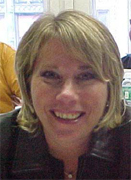Operation
Desert Learn
Project URL: http://teachersnetwork.org/teachnet-lab/ps101/bglasgold/
desertbiome/desertcontents.htm
How
it works:
This program contains a set of lessons on the desert as one of
Earth's seven major biomes. With the help of the Internet, students
travel from the blazing hot sand dunes of the Sahara, to the cold Gobi
Desert, to the rugged beauty of the Mojave Desert. Students become
familiar with factors that contribute to the creation of deserts, and
where the deserts are located. They learn the adaptations both plants
and animals have had to make in order to survive in such harsh
extremes of climate. They learn about the various people who have made
the desert their home and how they have adapted to the desert
conditions. The technology part of each lesson is integral to the
teaching of this unit. It provides pictures of the different types of
deserts and gives students practice using the computer as a tool for
graphing and creating webs.
Standards addressed:
Students demonstrate an understanding of: organisms and their
environments, how things change over time, the physical positions on
Earth, and the Earth's biodiversity. They write an informative
report, use scientific notation for writing of experiments, and
demonstrate an understanding of graphs.
Materials used:
The materials needed to teach this unit include computers,
printers, software such as Microsoft Word or AppleWorks. Access to the
Internet is a must. Digital cameras are great for documenting the
students at work. Books such as Our Planet: Deserts by Richard
Stephen, Wonders of the Desert by Louis Sabin, What Is a
Biome? by Bobbie Kalman, and What Are Food Chains and Webs?
by Bobbie Kalman are useful, as is the video "Desert: Eyewitness
Video." National Geographic magazine has articles on the
desert on a regular basis.
The
students:
This program is for third to fourth graders and can be adapted
upwards. The students should be of average ability with a working
knowledge of the computer and the Internet, and should know how to
work in cooperative groups.
Overall value:
The best feature of Operation Desert Learn is the
use of the Internet and the various computer web sites. It enables
students to travel through the deserts of the world without leaving
their seats! One innovative aspect is the use of the computer to graph
some of the assignments in the lessons. Teachers will want to adapt
this in their own classroom because it is a comprehensive look at the
desert and easily followed. It includes two hands-on science experiments
to illustrate the concepts taught.
Tips:
Make sure you have checked all web sites to see that they are
current and active before you assign the students to the computer. Try
to have books and pictures for further motivation. The children should
have some experience on the computer and using the Internet.
|

About the teacher:
Bonnie Glasgold is a Science Enrichment teacher in P.S. 101 in
Brooklyn, New York. She has been teaching science enrichment for the
last eight years and has been a New York City teacher for 22 years.
She has been a member of TeachNet for three years, and this is her
third unit on biomes of the world.
E-mail: bmglas@aol.com
Subject
Areas:
Science
Math
Technology
Grade
Levels:
3-5
|